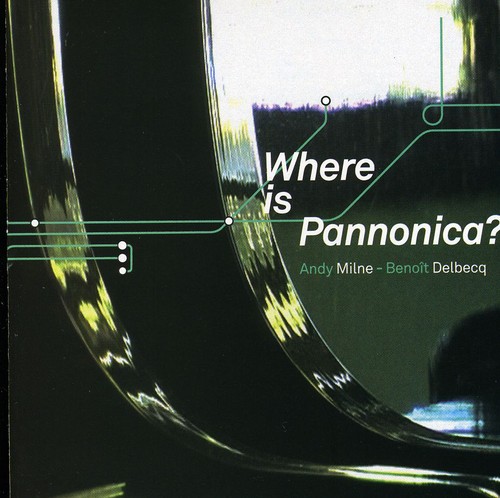Show results for
Explore
In Stock
Artists
Actors
Authors
Format
Theme
Category
Genre
Rated
Label
Specialty
Decades
Size
Color
Deals
- 4K Ultra HD Sale
- Action Sale
- Alternative Rock Sale
- Anime sale
- Award Winners Sale
- Bear Family Sale
- Blu ray Sale
- Blues on Sale
- British Sale
- Classical Music Sale
- Comedy Music Sale
- Comedy Sale
- Country Sale
- Criterion Sale
- Electronic Music sale
- Fantasy Film and TV
- Folk Music Sale
- Hard Rock and Metal Sale
- Horror Sci fi Sale
- Jazz Sale
- Kids and Family Music sale
- Kids and Family Sale
- Metal Sale
- Music Video Sale
- Musicals on Sale
- Mystery Sale
- Naxos Label Sale
- Olive Films on Sale
- Page to Screen Sale
- Paramount Sale
- Pop and Power Pop
- Rap and Hip Hop Sale
- Reggae Sale
- Rock and Pop Sale
- Rock Legends
- Soul Music Sale
- TV Sale
- TV Sale
- Vinyl on Sale
- War Films and Westerns on Sale

Where Is Pannonica?
- (Enhanced)
- Artist: Dapp Theory
- Format: SACD
- Release Date: 6/9/2009

Where Is Pannonica?
- (Enhanced)
- Artist: Dapp Theory
- Format: SACD
- Release Date: 6/9/2009
- Artist: Dapp Theory
- Label: Songlines
- UPC: 774355157923
- Item #: ALG515792
- Genre: Jazz
- Release Date: 6/9/2009
- This product is a special order
Product Notes
Benoît Delbecq has synthesized sounds and concepts from Ligeti and Steve Lacy to Aka Pygmy music, while Andy Milne's long association with Steve Coleman inspired a unique integration of rhythmic concepts from Cuba, Ghana, American jazz, funk and hip-hop. These masters of contemporary improvisation extend the scope of the piano duo during a three-week residency at the Banff Centre. Having recorded solo piano recitals for Songlines, here they interpret each other's compositions and collaboratively-created pieces with a jazzy, near-telepathic playfulness. Beyond a virtuosic exploration of extended pianistics, Where is Pannonica? is a step outside the box, opening onto new conceptual and acoustics-releated realms of audio art. The spatialization of the music in this 24/88.2 recording is heard in it's most complete form in the surround mix - in fact much of the music was composed specifically to exploit and draw inspiration from the sonic properties provided by the 5.0 format. In stereo too, each piece - and indeed the recording as a whole - is conceived as an ongoing dialogue between the instruments, the players, and the room. Extensive use of piano preparations transforms pitch and timbre, which are then continuously reorganized in rhythmic interplay from one pianist to the other. Milne comments: "When composing I tried to think of the 360 degrees of the room space and the more immediate space within and around each piano. For the intro to 'Ice Storm' I thought very consciously about creating compositional elements that would play with the sense of the space between the 2 pianos, using rhythm mostly, to create 5-channel imaging effects within the music." On several pieces (e.g. The coda of "Divide Comedy") Delbecq adds a shadowing, phantasmal element to the spatial aspects through the subtle use of electronics.
Credits
-
Performer(s)Andy Milne
Benoît Delbecq
-
Producer(s)Andy Milne
Benoît Delbecq
-
Composer(s)Benoît Delbecq
-
Artist(s)Dapp Theory


